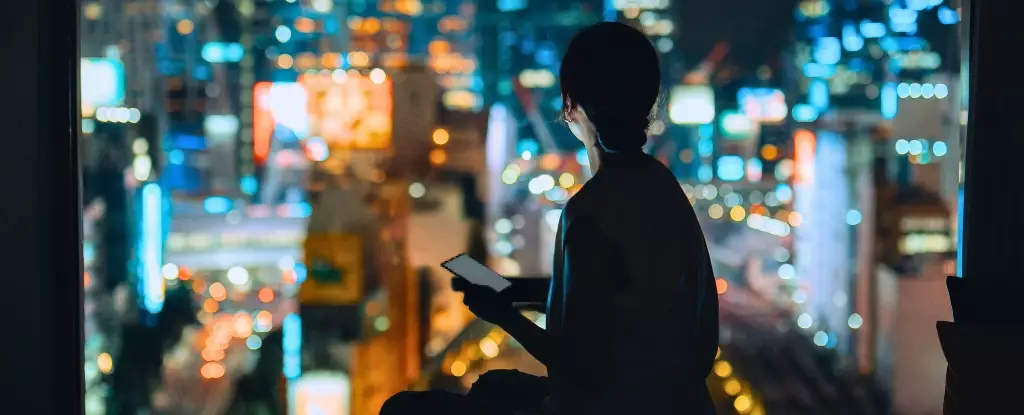In our quest for modern comfort and convenience, we often overlook the subtle perils lurking in our daily routines—particularly those that take place within the cozy confines of our bedrooms. Recent studies hint at a disturbing link between exposure to light during the night and an increased risk of cardiovascular issues. While the scientific community continues to grapple with the nuances of this association, the implications are clear: unintentional light pollution inside our homes might be silently damaging our most vital organ—the heart. The idea that something as innocuous as a glow from a screen or a bedside lamp could undermine cardiovascular health challenges our assumptions about what constitutes a healthy sleeping environment. This emerging evidence demands a shift in how we prioritize sleep hygiene in a culture obsessed with technology and accessibility.
Disrupting Nature’s Timing: The Science Behind Circadian Chaos
At the core of this issue lies the intricate relationship between light exposure and our internal biological clocks. Our bodies are finely tuned to the rhythms of the day-night cycle, with light acting as the primary cue for regulating sleep and wakefulness. When this delicate balance is disturbed—say, by turning on a bright lamp late at night or scrolling through social media—a cascade of biological consequences ensues. The study of over 88,000 individuals tracked light exposure at night and revealed a stark reality: those subjected to excessive light had a markedly higher incidence of serious heart conditions including strokes, atrial fibrillation, and coronary artery disease. The disturbing part? These findings persisted even after accounting for other well-known risk factors like smoking, diet, and physical activity, suggesting that light exposure is an independent threat. If our biological clocks are thrown off kilter, it can lead to disruptions in blood pressure regulation, glucose metabolism, and even blood clotting—all of which increase cardiovascular risk.
Breaking the Myth: Light Isn’t Just a Nuisance, It’s a Threat
For decades, health advice has focused on diet, exercise, and smoking cessation as the pillars of cardiovascular health. Yet, an often-overlooked contributor—light at night—may be just as critical. Despite being less visible than diet or exercise, its insidious nature makes it particularly dangerous. The reality that more than half of the US population falls asleep with the television still flickering in the background should be alarming. Modern life’s reliance on glowing screens and electric lighting has normalized this behavior, subtly eroding our circadian health without immediate consequences. However, the long-term implications—ranging from heightened inflammation to increased blood clot formation—pose a tangible threat to our heart health. It’s time we challenge the comfort of ambient lighting and acknowledge that minimizing light exposure after sunset is a vital step toward safeguarding our well-being.
A Wake-Up Call with Practical Solutions
The evidence, while still evolving, advocates for a meaningful change in our nightly habits. Simple actions—such as installing blackout curtains, turning off electronic devices well before bedtime, and reducing ambient lighting—could significantly diminish the risk of cardiovascular disease. These measures are accessible, cost-effective, and backed by emerging scientific insights that highlight the critical role of circadian harmony. Yet, the cultural acceptance of nighttime illumination persists, often rooted in convenience and the pervasive allure of screens. As a society, we must recalibrate our relationship with light, recognizing it not merely as a tool for visibility but as a potential health hazard. Our internal clocks are not optional accessories—they are essential to our survival. Restoring this natural rhythm might not only improve sleep quality but could also serve as a powerful preventative strategy against heart disease.
Challenging the Modern Lifestyle for Heart’s Sake
In the grand scheme of public health, confronting the hazards of nighttime light exposure requires a nuanced balance. It’s about fostering awareness without succumbing to fearmongering. The goal is to empower individuals with realistic, actionable insights that fit within the complexities of modern life. Advocating for darker sleeping environments does not mean abandoning technology or comfort but rather rethinking their use in ways that respect our biological needs. For policymakers and health professionals, this might mean promoting public campaigns that stress the importance of sleep hygiene, including minimizing light exposure. For individuals, it’s a call to reclaim the sanctity of nighttime darkness—restoring not just sleep, but the very rhythm that keeps our hearts healthy and alive.

Leave a Reply